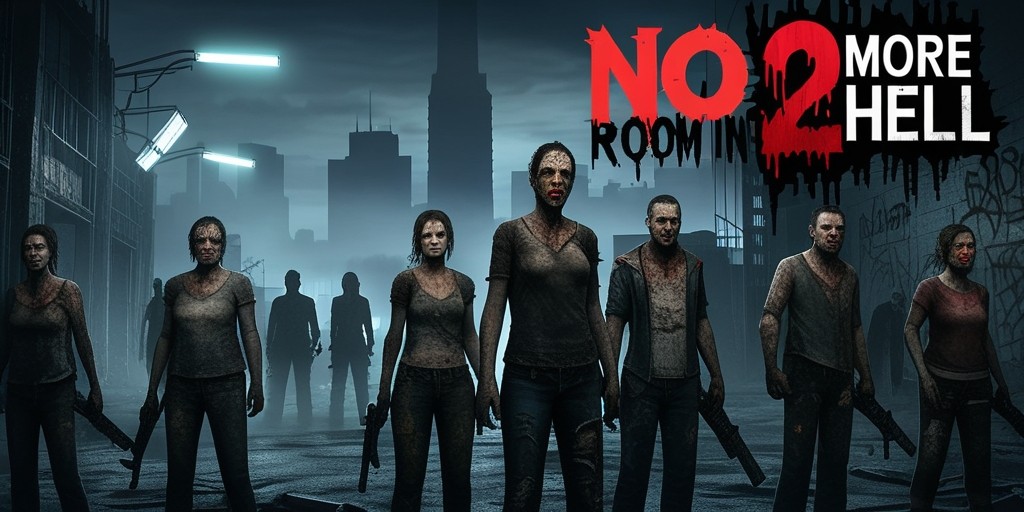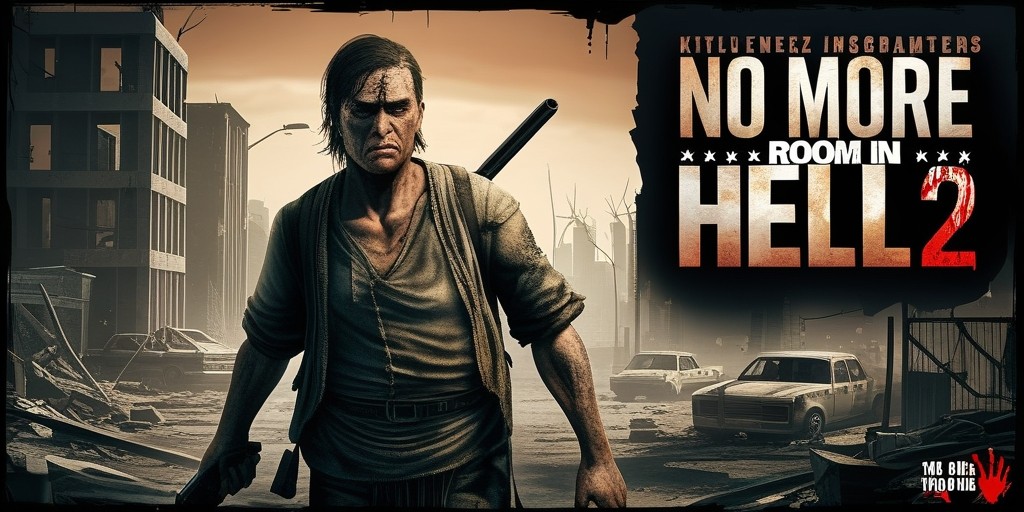Survival in Shadows: The Uneasy Collaboration of No More Room in Hell 2
31 Oct 2024

The allure of cooperative gaming often lies in the tense experiences shared with friends or strangers alike, especially within the horror genre. In the realm of zombie-themed games, few titles manage to evoke a sense of dread quite like No More Room in Hell 2. This early access shooter leans heavily into that anxiety, presenting players with a world where survival is a constant battle against the undead. As players navigate through desolation and despair, the game captures the essence of a zombie apocalypse, amplifying the fear of being overrun by relentless hordes. Let’s delve deeper into what No More Room in Hell 2 offers, shedding light on its mechanics, atmosphere, and the nuanced player dynamics that underpin this chilling experience.
No Ordinary Zombie Game
No More Room in Hell 2 distinguishes itself from typical zombie shooters. Instead of the chaotic frenzy reminiscent of titles like Left 4 Dead, it emphasizes a slow-burn approach, cultivating an experience steeped in tension. Here, each moment feels heavy, often leading players to moments of sheer hopelessness – a hallmark of classic zombie narratives. You can almost hear the echoes of George Romero's intention, invoking not just fear but an existential contemplation of survival.
Cooperative Multiplayer Mechanics
This early access title showcases an engaging multiplayer experience. Designed for up to eight players, it tasks you with surviving in a single, expansive map. Each participant begins their journey from a unique spawn point, armed with minimal gear – merely a pipe and limited ammunition. As you navigate the environment, seeking essential supplies, interactions unfold organically, allowing for spontaneous alliances or unexpected rivalries.
The Map Structure: A Double-Edged Sword
While the idea of roaming freely through a decaying landscape tantalizes, the design can feel restrictive at times. The map consists of defined pathways and spawn points that inevitably lead players to predictable encounters. However, these moments, while sometimes formulaic, do create opportunities for collaboration and shared tension. Discovering equipment caches becomes a communal affair, heightening the stakes as you fend off the undead together.
Unscripted Encounters: The Heart of Collaboration

The dynamic nature of player interaction deeply enriches the gameplay experience. In one instance, I found myself cornered by zombies with my revolver running out of ammunition. Just as I braced for attack, another player swooped in for a timely rescue. These moments foster camaraderie, making each match feel distinctly unique. And let's not overlook the hilarity that ensues from miscommunications; players new to the genre often make blunders that create tense yet endearing narratives.
A Bleak and Ominous Atmosphere
The game's setting plays a pivotal role in establishing its dark ambiance. The lighting – mostly non-existent – plunges players into shadows, with the only illumination emanating from headlamps or the eerie glow of vehicle brake lights. It's a chilling environment that instills a sense of dread, urging you to reconsider every flick of the switch that might draw attention to your whereabouts.
Combat Mechanics: A Study in Restraint
The combat system transgresses the typical run-and-gun formula prevalent in many games. Guns, while effective, are deliberately scarce and cumbersome to handle. Ammunition is limited, making each shot feel like a calculated risk. Every missed shot can lead to increasing anxiety as the horde closes in. The satisfaction of a well-placed shot is palpable, but the game incidents a level of restraint that heightens both immersion and fear.
Favors for Finesse: A Hand-to-Hand Approach
In No More Room in Hell 2, melee combat provides a refreshing contrast to gunplay. Engaging in close-quarters combat with makeshift weapons – from bats to knives – balances risk and reward. These encounters are not only quieter but allow for a more tactical approach to zombie dispatching. Success in hand-to-hand combat can turn the tides in dire situations, making players reconsider their reliance on firearms.
Character Permadeath: The Weight of Decisions

Permadeath introduces an additional layer of tension to the cooperative experience. Should you fall victim to the relentless undead, you’ll have to start fresh with a new character. This mechanic amplifies the significance of teamwork, as your survival is intricately dependent on your accompanying players. It encapsulates the essence of a zombie apocalypse – your fate hangs in the balance with each encounter.
Balancing Traditional and Modern Undead
However, the game occasionally falters in its execution, particularly when introducing modern interpretations of zombies that disrupt the established rhythm. The tension built around traditional walkers can be thrown into chaos when faster zombies are introduced without warning. This shift can diminish the carefully constructed atmosphere and pacing, making for jarring experiences that veer from the intended mood.
Development Roadmap: Cautionary Evolution
As Torn Banner progresses within early access, a roadmap has been laid out promising expansions including new maps and weaponry. However, the idea of new zombie types raises concerns. Zombies thrive on their mundane horror; introducing quirky gimmicks could dilute the chilling essence that the game has established. Less is often more in horror, especially when the simple concept of a horde can evoke maximum dread.
The Mystery of Mixed Reviews
Despite its engaging gameplay and thematic depth, No More Room in Hell 2 has encountered a mixed reception on platforms. Bugs and occasional crashes have plagued the early access version, yet the core experience remains immersive and gripping. Many may dismiss the game as merely another entry in a saturated genre, but it weaves together tense moments, fear, and social dynamics that can arguably set it apart.
A Symphony of Fearful Collaboration

What truly resonates in No More Room in Hell 2 is the amalgamation of themes, mechanics, and social interaction. Players find themselves not only battling against the undead but also facing the inherent unpredictability of human collaborators. As relationships unfold, theme dynamics evolve, leading to moments of genuine connection and collective turmoil in the face of overwhelming odds.
Final Thoughts: An Invitation to the Undead
No More Room in Hell 2 offers a refreshing take on the zombie genre, merging slow-paced horror with cooperative gameplay. It invites players to tread cautiously through each scenario, enhancing that primal fear at the core of surviving a zombie apocalypse. While room for improvement and evolution exists, it stands as evidence of how zombie games can embrace both the familiarity of the genre and the less explored aspects of human interaction and relationships. As players gear up for terrifying encounters, they should remember to never underestimate the shadows lurking just beyond the light.







